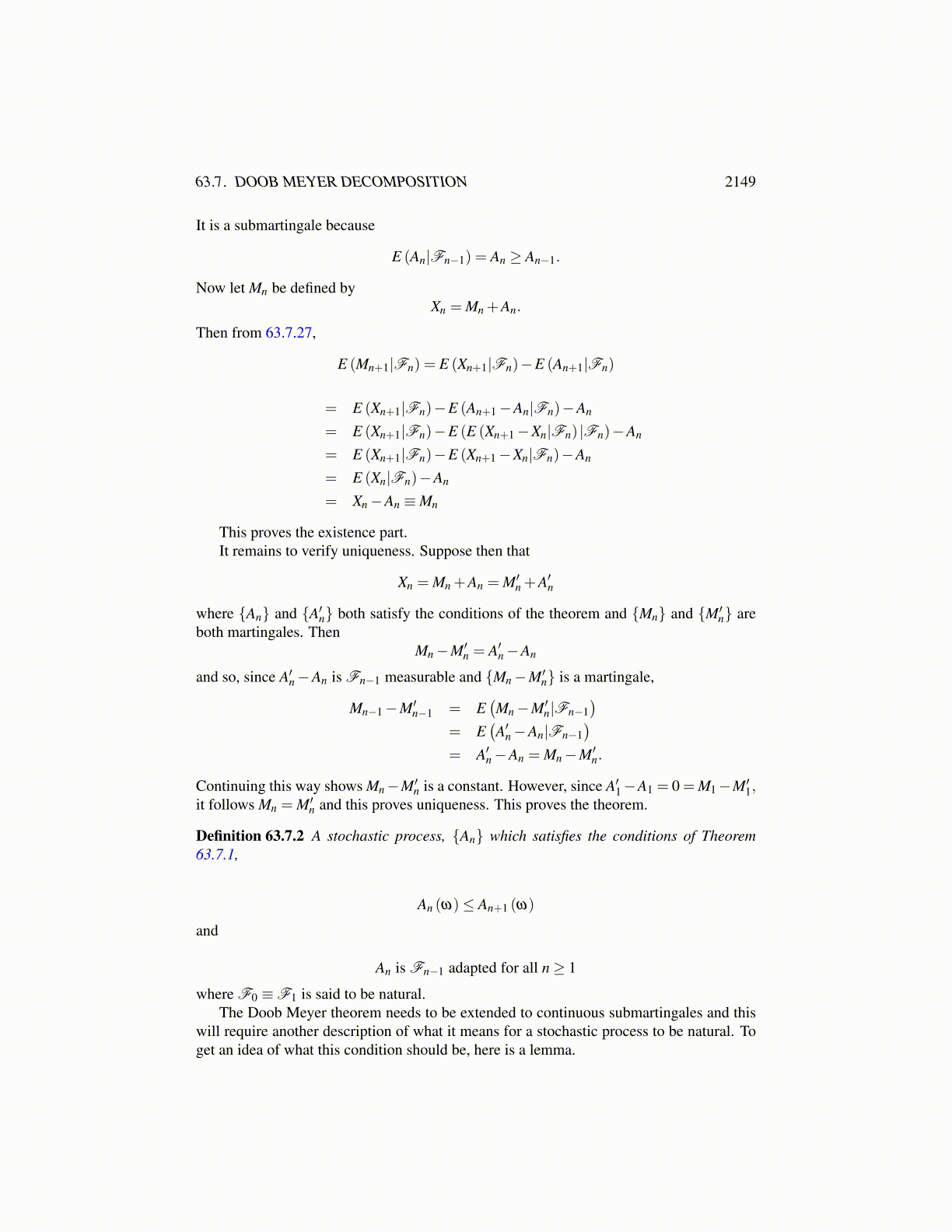
63.6. ANOTHER LIMIT FOR QUADRATIC VARIATION 2149
Theorem 63.6.4 Let H be a Hilbert space and suppose (M,Ft) , t ∈ [0,T ] is a uniformlybounded continuous martingale with values in H. Also let
{tnk
}mnk=1 be a sequence of parti-
tions satisfying
limn→∞
max{∣∣tn
i − tni+1∣∣ , i = 0, · · · ,mn
}= 0, {tn
k }mnk=1 ⊆
{tn+1k
}mn+1k=1 .
Then
[M] (t) = limn→∞
mn−1
∑k=0
∣∣M (t ∧ tnk+1)−M (t ∧ tn
k )∣∣2H
the limit taking place in L2 (Ω). In case M is just a continuous local martingale, the abovelimit happens in probability.
Proof: First suppose M is uniformly bounded.
mn−1
∑k=0
∣∣M (t ∧ tnk+1)−M (t ∧ tn
k )∣∣2H
=mn−1
∑k=0
∣∣M (t ∧ tnk+1)∣∣2−|M (t ∧ tn
k )|2−2
mn−1
∑k=0
(M (t ∧ tn
k ) ,M(t ∧ tn
k+1)−M (t ∧ tn
k ))
= |M (t)|2H −2mn−1
∑k=0
(M (t ∧ tn
k ) ,M(t ∧ tn
k+1)−M (t ∧ tn
k ))
= |M (t)|2H −2mn−1
∑k=0
RM (t ∧ tnk )(M(t ∧ tn
k+1)−M (t ∧ tn
k ))
= |M (t)|2H −2mn−1
∑k=0
RM (tnk )(M(t ∧ tn
k+1)−M (t ∧ tn
k ))
Then by Lemma 63.6.3, the right side converges to
|M (t)|2H −2∫ t
0(RM)dM
Therefore, in L2 (Ω) ,
limn→∞
mn−1
∑k=0
∣∣M (t ∧ tnk+1)−M (t ∧ tn
k )∣∣2H +2
∫ t
0(RM)dM = |M (t)|2H
That term on the left involving the limit is increasing and equal to 0 when t = 0. Therefore,it must equal [M] (t).
Next suppose M is only a continuous local martingale. By Proposition 63.2.2 thereexists an increasing localizing sequence {τk} such that Mτk is a uniformly bounded mar-tingale. Then
P(∪∞k=1 [τk = ∞]) = 1